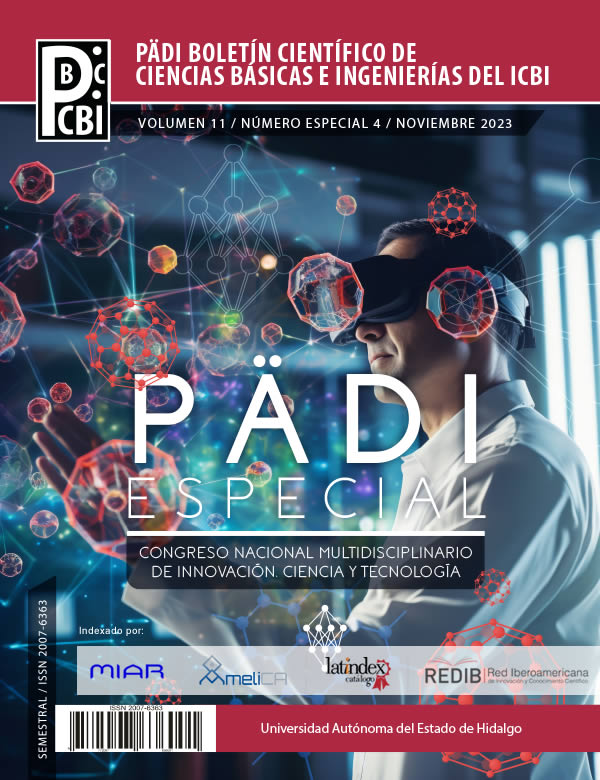Construction of a 3-leads cardiac monitor for educational purposes
Abstract
The present work shows the design and construction of a didactic ambulatory prototype for measuring the electrical activity of the heart (ECG). The methodology is based on the theoretical analysis of cardiac biosignals and their acquisition methods, later the design is carried out taking as reference the introduction of equations and circuit diagrams that allow the capture and adaptation of the signal, these being the Obtaining the biosignal performed through surface electrodes connected to the user's extremities and sent to an electrical isolation system to avoid a possible shock to the user; the processing by means of analog electronic circuits for the amplification, filtering and adequacy of the signal, finally an Arduino card is implemented, to digitize the signal and display the information on the screen. Performance tests are performed using a multiparameter simulator that generates electrocardiogram signals with different characteristics to validate that the measurements are reliable.
Downloads
References
American Heart Association (AHA) (1975). Electrocardiography Subcommittee, et al. Recommendations for standards in electrocardiography. American Heart Journal. 89, 4, 662–94.
International Electrotechnical Commission (IEC) (2010). Medical electrical equipment - Part 1-1: General requirements for basic safety and essential performance. Geneva: IEC.
Kligfield P, Gettes LS, et al. (2007). Recommendations for the Standardization and Interpretation of the Electrocardiogram. Part I: The Electrocardiogram and Its Technology: A Scientific Statement From the American Heart Association Electrocardiography and Arrhythmias Committee, Council on Clinical Cardiology; the American College of Cardiology Foundation; and the Heart Rhythm Society Endorsed by the International Society for Computerized Electrocardiology. Circulation; 115, 1306–1324.
Lee, D. C., & Mark, R. G. (2008). Electrocardiography: practice and interpretation. In Electrocardiography. Springer, 11–28.
Ludewing, L. R. (1999). Amplificadores operacionales y circuitos integrados lineales. Naucalpal de Juaréz: Prentice Hall.
Organización Mundial de la Salud. (2011). Introducción a la gestión de inventarios de equipo médico. Serie de documentos técnicos de la OMS sobre dispositivos médicos. Recuperado de https://apps.who.int/iris/bitstream/handle/10665/44817/9789243501390_spa.pdf;sequence=1.
Pardo Ospina, J, & Tejedor Restrepo, R. (2020). Diseño de un Módulo de Adquisición de Potencial Eléctrico Cardiaco ECG de Bajo Costo. Universidad de los Llanos.
Salerno, D. M., & Zanaboni, P. (2016). The clinical utility of electrocardiography. In Practical Medical Procedures at a Glance. Wiley-Blackwell, 138–139.
Secretaría de Salud. (2017). Plan Estratégico de Infraestructura y Equipamiento Médico 2017–2024. Recuperado de http://www.csg.salud.gob.mx/descargas/pdf/pipelinedeinversionesenequipamientomedico20170830.pdf.
Sivarajan, V. B., & Rosenbaum, D. S. (2019). Basics of Electrocardiogram Interpretation. In Manual of Cardiovascular Medicine. LWW, 21–26.
Zárate-Ocaña, G. T., Ramos-Cuevas, M. D., Contreras-Cariño, L. B., Bélen-Luna, J. C., & González-Morán, C. O. (2018). Diseño y construcción de un prototipo biomédico para la adquisición vía remota de signos vitales utilizando tecnologías del internet de las cosas (IoT). Memorias Del Congreso Nacional De Ingeniería Biomédica, 5, 1, 470–473. Recuperado a partir de http://memoriascnib.mx/index.php/memorias/article/view/564.
Copyright (c) 2023 Sergio Emmanuel Soria-Medina, Guillermo Rey Peñaloza-Mendoza, Alicia Campos-Hernández

This work is licensed under a Creative Commons Attribution-NonCommercial-NoDerivatives 4.0 International License.













